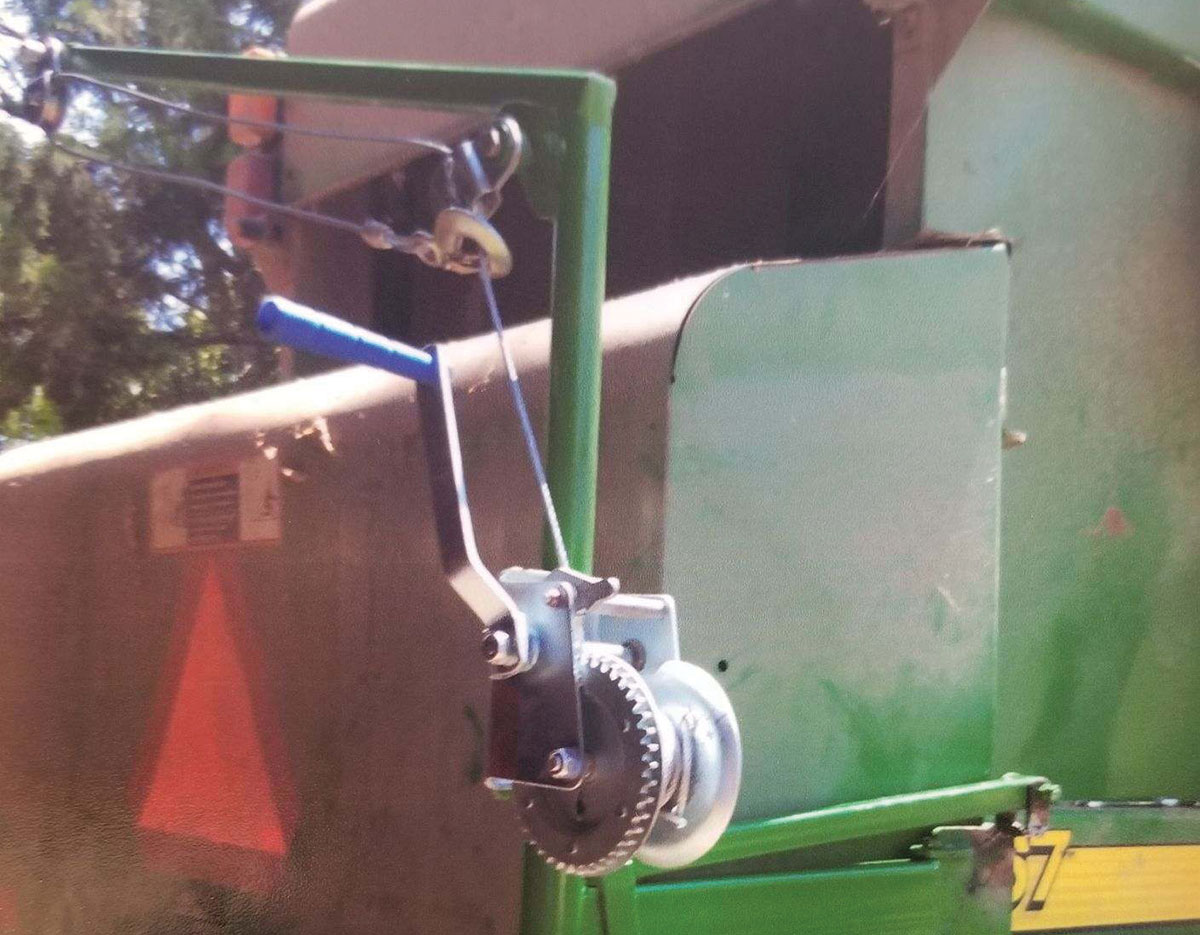Beyond the levee of the Arkansas River, in the shadows of Petit Jean Mountain, Robert Carruthers stopped growing soybeans, wheat, Milo, alfalfa and hay, and began planting his pecan orchard, calling the business Pecan Arkansas. All together his prime bottomland farm covers 800 acres, 165 in pecan trees. In 1995 he planted half of the 165 acre orchard, the other half planted the following year, with 35 x 60 foot spacing. This year he has 3,108 productive pecan trees. Some pecan growers are born into the craft. Others, like Robert, are self-taught. He shook his head and laughed while talking about all he has learned and how much more he needs to know.
“Some things sound good on paper,” he said, “but often really don’t work when you put the idea into practice. One such incident was setting up my irrigation system. I wanted to fix it so I could also fertilize with that system by using a transfer pump and every tree would get exactly the same dose. The problem is you cannot get all the trees to grow exactly the same size. You put out enough fertilizer for the big trees; you’re going to kill the little trees. Put out just enough for the little trees, you’re starving the big ones. Instead of a drip system, I’m using micro-sprinklers, with ten foot barriers of Roundup, and that’s proven very efficient.”
Sufficient soil moisture and a vegetation-free zone around the tree are foremost among the factors affecting tree survival, and the first 3 to 5 years after planting are crucial to survival and establishment of the tree. Fertilization of pecan trees is based on a soil test and leaf analysis taken in the year of establishment, and thereafter every three years, to monitor soil pH and nutrient levels. A neighboring farmer fertilizes the orchard and cuts the grass in return for the hay.
“I did row crops for 29 years, but with the high cost of new machinery,” Robert said, “I realized I was the wrong size farm to make row crops profitable. The worst thing about the pecan business is spending money upfront. I had at least $100.00 invested in each tree, before I ever made a dime. Getting started, you go about eight years without a real paycheck.”
CULTURE & HISTORY
Specific strategies in sustainable production practices like Robert’s must take into account topography, environment, climate, economic profitability, pests, social and economic equity, soil characteristics and the individual grower’s goals. A sustainable farming system strives to be productive, yet at the same time preserving environmental quality and making efficient use of nonrenewable resources. This ideal rests on the principle of meeting the needs of the present without compromising the ability of future generations to meet their own needs. The largest member of the hickory family, pecan trees often grow to a height of over 70 feet and a spread greater than 80 feet.
“Another reason I started in pecans, Indians used to call this place Pecan Point,” Robert said. “Here between Point Remove Creek and the Arkansas River the sandy soil is ideal for pecan trees. The creek got its name, Point Remove, because this is where the Cherokee were gathered to take them with others on the Trail of Tears into Oklahoma. Along the creek about ninety percent of the trees are pecan. So, I learned a long time ago, you can mess with Mother Nature, but you better do what she wants, because if you ever blink, she’s going to do what she wants anyway.”
Pecan varieties are valued based upon their “meat yield,’ or percentage of weight that is edible, usually 45 to 54 percent. The first 25 years it’s called trial planting. The USDA named all except the first five varieties in the state after the Indians. Robert based his selection on pecan flavor. His pollinator is the Choctaw, they shed and receive pollen in a cycle opposed to that of other varieties. Oconee, his favorite, are well-shaped, tend to produce a healthy number of nuts; most mature at the same time. He also has early bearing Pawnees. Nut maturity is indicated by the shuck splitting and separation of nut from shuck, he explained.
“I harvest early, with 90 percent still on the trees when I shake them. That way my pecans aren’t on the ground too long. I get a better market price, it cuts down on predator damage, and I get a higher quality kernel. I’d rather have 100 pounds of good pecans, than a million pounds of junk. My foremost goal is high quality. We did a few hundred pounds shy of 188,000 pounds this year. At a rough guess, we’ve harvested 10 percent of what production will be in Arkansas.”






